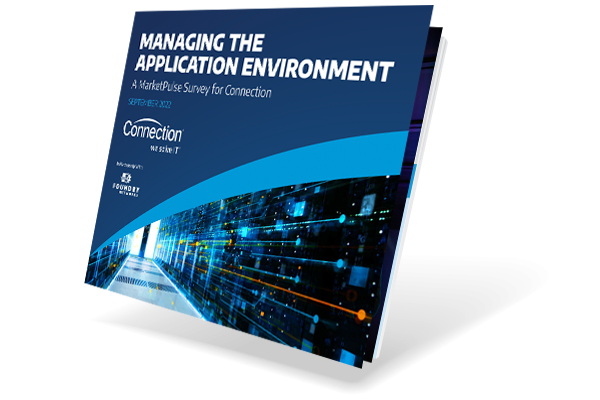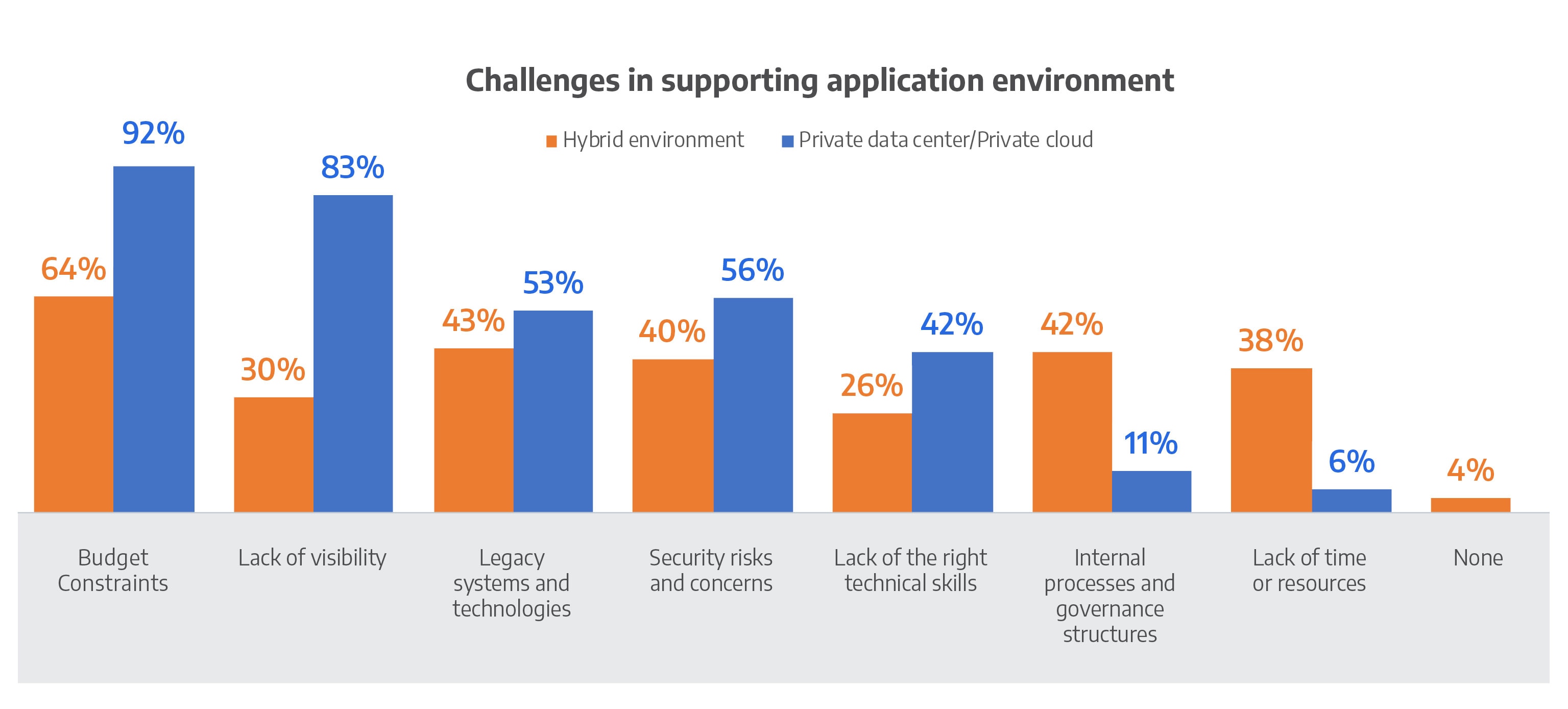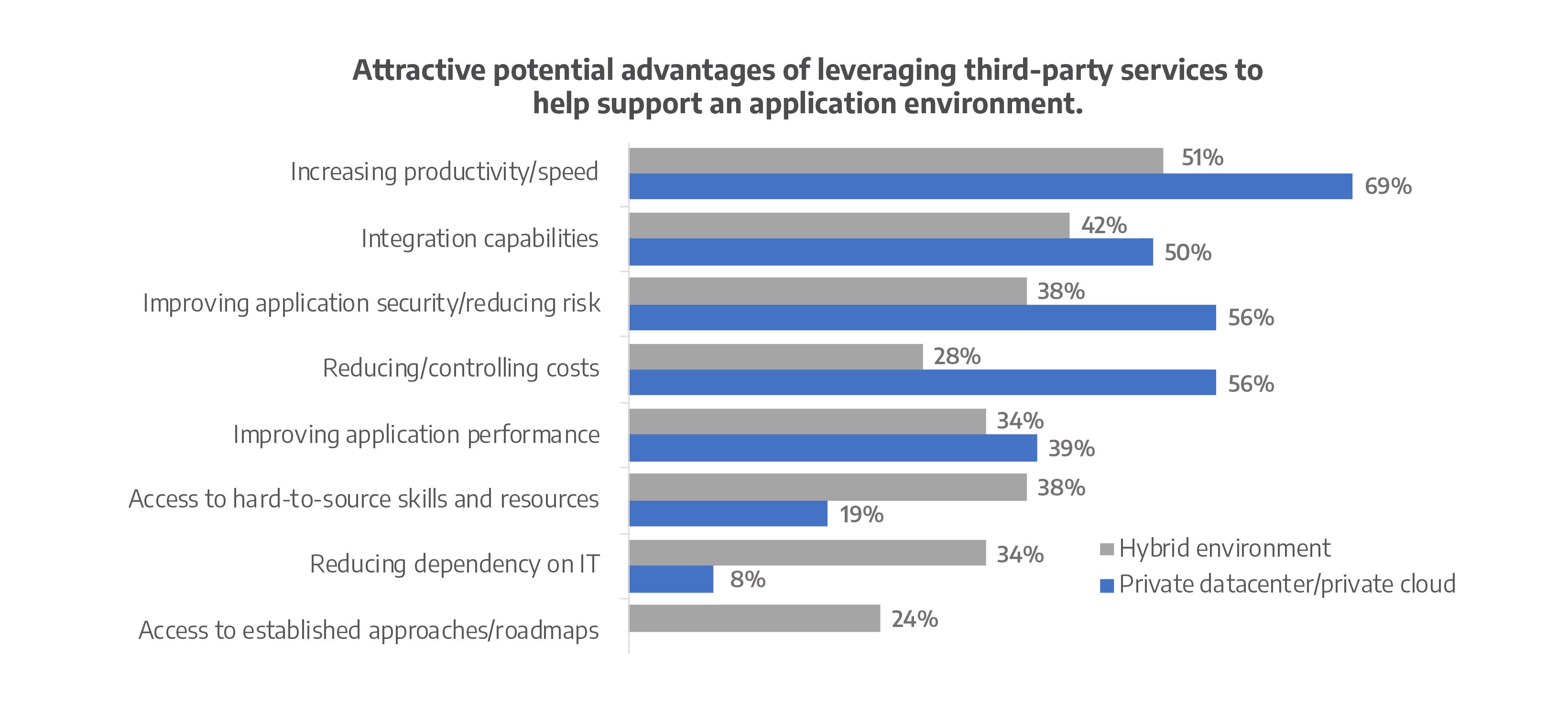
The modern application management environment is increasingly complex. With an exponentially growing number of applications and integrations—and wider adoption of remote or hybrid work environments—organizations must respond with agility to a constantly evolving digital landscape to ensure the reliability of operations and mission-critical applications.
To better understand what modern day application management looks like—and what organizations are doing to meet the demands—Connection partnered with Foundry to survey 100 senior U.S. IT decision makers at companies with 500 or more employees.
This article outlines some of the key insights from the research, including peer-to-peer insight into:
To better understand what modern day application management looks like—and what organizations are doing to meet the demands—Connection partnered with Foundry to survey 100 senior U.S. IT decision makers at companies with 500 or more employees.
This article outlines some of the key insights from the research, including peer-to-peer insight into:
- The type of environment used to run applications
- The impact of the environment on the challenges organizations encounter
- Approaches organizations are taking when it comes to application management
- The perceived benefits of leveraging third-party services
Budget, Limited Visibility, and Legacy Systems Among Top Challenges
An uncertain economic climate has many organizations tightening budgets. IT investments are not immune.- 73% of IT leaders said budget constraint is the number one challenge they face.
But the consequences of limited visibility can be far-reaching. Poor visibility makes it challenging to measure application performance and understand the cost of poor performance. A lack of visibility can also create security vulnerabilities and negatively affect the user experience through delays in troubleshooting application performance issues and undetected application outages.
Different Application Environments Create Different Challenges
More than half (53%) of respondents said they are running in a hybrid environment today. The second most common environment was a private data center/private cloud (36%). Only 11% of respondents said their organization runs applications in a public cloud/multi-cloud environment.Interestingly, the findings also revealed that the type of environment plays a significant role in the challenges organizations encounter. For those running a private data center/private cloud environment, budget, visibility, legacy technology, and security were all significantly bigger challenges to the organization than for those running a hybrid environment.
However, internal processes and governance structures (42%)—and a lack of time or resources (38%)—were significantly more challenging for those with a hybrid environment than for those with a private data center/private cloud environment, which listed those challenges as only 11% and 6%, respectively.

A Hybrid Environment Wins on Visibility
Greater visibility into application workloads provides important advantages. IT teams can see how applications are functioning and take immediate steps to resolve issues. Workload visibility also helps to determine the performance of storage and computing systems under various workload conditions and gives IT the ability to perform workload profiling and modeling to determine which workloads will run best where.Despite the importance of greater visibility, many organizations continue to struggle to achieve it—and the type of environment they use for application management can have an impact. A lack of visibility was much more significant for those running a private data center/private cloud environment (83%) compared to those running a hybrid environment (30%). This was also true of visibility challenges into application workloads.
Those running applications in hybrid environments reported much higher levels of application workload visibility.
- 36% of those with a hybrid environment reported very high visibility into application workloads versus only 2% of those in a private data center/private cloud environment.
Strategies for Application Management
Having a robust application management strategy can be critical in keeping up with an increasingly complex and evolving application environment. Having an application rationalization strategy—which is the process of reviewing the application inventory to determine which applications should be retired, retained, reposted, replatformed, refactored, or reimagined in order to optimize cost and performance—is one way organizations can become more efficient in their application management.Yet, the majority of IT leaders said their organizations (61%) do not have an enterprise-wide application rationalization strategy. The type of environment an organization is using does seem to affect adoption.
- Over half (51%) of those with private data centers reported having an enterprise-wide application rationalization strategy, while only 37% of those with hybrid environments reported an enterprise-wide strategy.
- 93% of organizations said they are using DevOps either across the entire application environment (45%) or in one or more areas (48%).
Third-Party Resources Highly Valuable
When asked about third-party services value to help support the application environment, 90% or more of IT leaders said they find services—such as application workload assessments (60%), access to application development resources (47%), and DevOps resources (28%)—highly valuable.Increased productivity/speed was identified as the top benefit (59%) of leveraging third-party services to support application environments. Other benefits included:
- Integration capabilities (46%)
- Improved application security/reduced risk (44%)
- Reduce/control costs (41%)
On the other hand, access to hard-to-source skills and resources, reducing dependency on IT, and access to established approaches/roadmaps were seen as much more of an advantage by those running a hybrid environment. These perceived benefits align closely with the challenges those in hybrid environments say they face.

Final Thoughts
The findings indicate, regardless of the environment an organization is running, that many companies still have room for improvement when it comes to application management. Some organizations could consider switching to a hybrid environment to decrease visibility challenges but should recognize that hybrid environments come with more governance and resource challenges. Overall, the findings showed that most organizations could benefit from increased visibility—such as having a single pane to view the entire application environment, using DevOps across the enterprise, and leveraging third-party services—if they are not already doing so.Additional Cloud Resources
Cloud Services
We offer cloud services for maximizing cloud investments, performance tuning, cloud assessments, and workload migrations. Our cloud specialists are ready to help your organization. Learn how our specialized services can help.
Cloud Services
Cloud Services

Cloud Technology Resources
Cloud technologies offer considerable advantages to organizations, including improved productivity and growth scalability. But there are risks to consider as well, such as security concerns and spend inefficiencies. Check out our latest resources to learn more.
Cloud Technology
Cloud Technology
